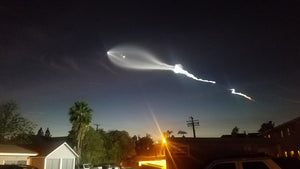Mars: Three Countries on a Mission
February is an important month for three countries and their quest for scientific inquiry on Mars. Three separate missions from three countries are expected to arrive at the red planet between Feb. 9th and Feb. 18th.
First to arrive on Feb. 9th, is the Hope Orbiter from The UAE, this will be a historical arrival for as it is the first Arab and Islamic country to lead a successful mission to Mars. After seven to nine months of space travel, the probe will approach its orbit around Mars coinciding with the 50th anniversary of the founding of the United Arab Emirates. The spacecraft will then collect two years' worth of scientific data, with an optional two-year extension that would take the mission into 2025.The Emirati government later said it also planned to build a habitable settlement on Mars by 2117.
Second, is the Tianwen-1 mission from China will arrive Feb. 10th. After entering orbit, Tianwen-1 will begin to prepare for a landing attempt of the mission's rover. The orbiter will begin imaging the landing site within the huge impact basin Utopia Planitia, to the south of NASA's Viking 2 landing site. China has successfully landed on the moon three times, with Chang'e 3 in 2013, Chang'e 4 on the far side in 2019, and Chang'e 5 in December last year. Getting ready for the 4th attempt will take a few more months, and is expected to take place in May.
Last to arrive, but first to attempt landing is NASA's Perseverance Mission on Feb. 18th. Perseverance is the centerpiece of NASA's $2.7 billion Mars 2020 mission. If the rover has a successful landing, it will hunt for signs of habitable environments on Mars while searching for signs of past microbial life. The robotic traveler will also collect a series of samples that can be returned to Earth by a future campaign.
You may be wondering why so many Mars missions are set to arrive this month. Well the answer is fairly simple. With current space travel technology, it takes approximately 7 months to reach the orbit of Mars, so with that equation in mind scientists and engineers work together to determine the date that requires the least amount of power for interplanetary travel. That optimal time occurs once every 2 years, most recently July of 2020 when the three countries initially launched their missions. (pictured below)
Clear skies,OCtelescope







